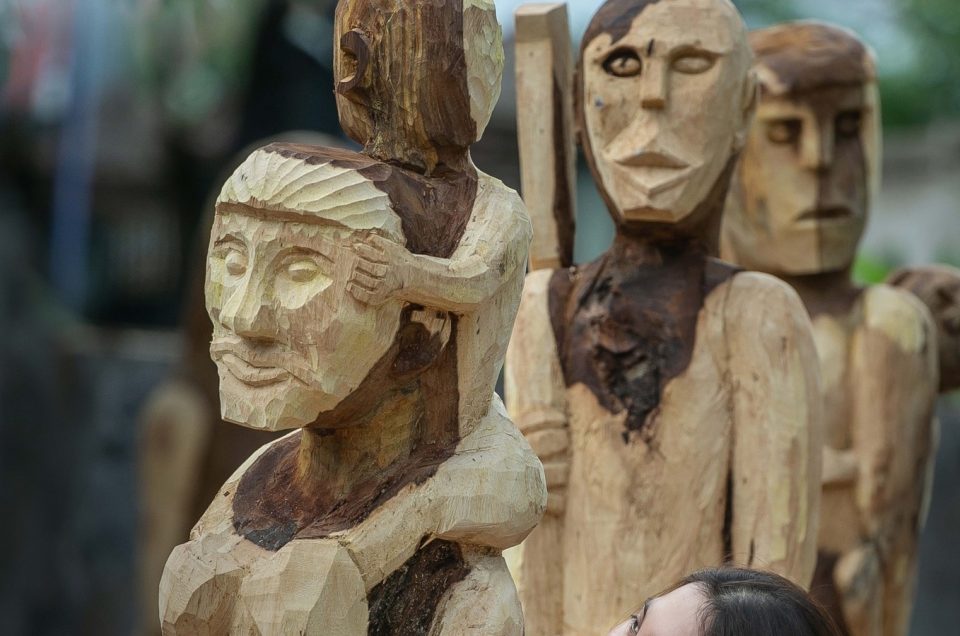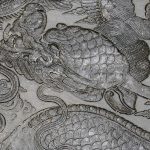Wooden statues have great significance in the spirituality of Central Highlands’ ethnic minority people. These statues express their rustic yet exceptional world views, which are intimately connected to their daily lives. Every statue has a unique and lively expression created from simple tools such as axes, chisels, and knives.
The wooden sculptures of the Central Highlands have distinctive qualities since they are not sculpted according to any models, proportions, or norms. They are wholly dependent on each artisan’s talent, ingenuity, and imagination. First, the artist contemplates the log and uses a piece of coal to outline the statue’s rough form. As the artist’s imagination takes flight, the statue slowly emerges with each strong and decisive hand movement.

Central Highlanders divide their statues into two categories: charnel and decorative. Charnel statues must abide by the strict conventions of the village. Upon being felled, the log is brought to the burial site without passing through the village. The artisan then brings his toolbox to the burial site and begins work. Talented village artisans carve statues for families in preparation for the Po thi ceremony.
Their gifted hands transform wooden logs of all shapes and sizes into rustic yet diverse forms: a bereaved man hugging his knees; a mother carrying her child on her back; someone pounding rice; someone smoking; and a young drummer. These statues vividly reflect the day-to-day activities of the Central Highlanders. At the same time, they convey the sentiments, good byes, and well wishes of those who remain.
 Decorative statues are also varied in themes since they can take the form of day-to-day objects, such as a gourd or bronze pot, or domestic animals like peacocks, owls, and dogs. Fern motifs are mostly used for decorating rong houses.
Decorative statues are also varied in themes since they can take the form of day-to-day objects, such as a gourd or bronze pot, or domestic animals like peacocks, owls, and dogs. Fern motifs are mostly used for decorating rong houses.




